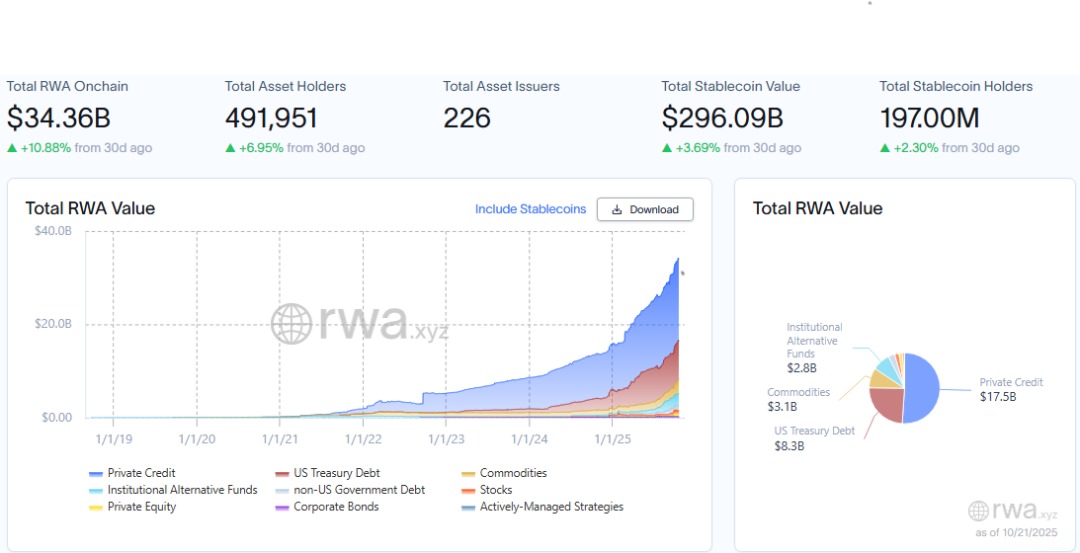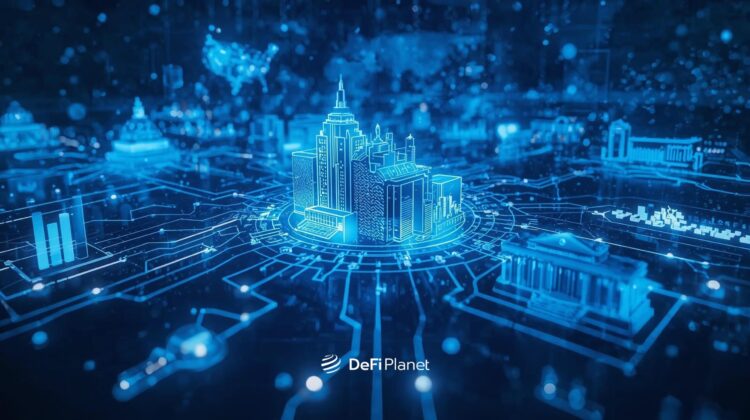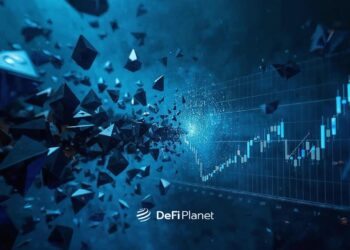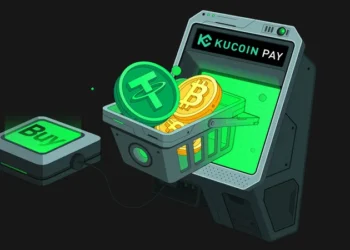Quick Breakdown:
- Real-world asset tokenization is transforming traditional finance by bringing assets like Treasuries, credit, and real estate on-chain.
- Private credit leads the RWA market, offering faster, transparent, and liquid access to fixed income.
- Tokenized U.S. Treasuries remain the foundation of the ecosystem, combining safety, yield, and institutional trust.
- Real estate, commodities, and carbon markets are emerging as the next frontier, driving ESG-focused tokenization.
- The future belongs to tokenized real-world assets that go beyond digitization, using blockchain to reshape how value is created and traded.
Tokenization Meets Traditional Finance
The tokenization of real-world assets (RWAs) has evolved from being a blockchain buzzword into one of the most practical applications of decentralized technology. What began as small-scale experimentation with synthetic debt and stablecoins has matured into a full-fledged financial movement.
From government Treasuries and commodities to private credit and even fine art, real-world asset tokenization is bridging traditional finance and the digital economy, transforming illiquid or institution-only assets into yield-bearing, collateralizable, and globally accessible instruments.
According to RWA.xyz, the total tokenized real-world assets on-chain surpassed $33 billion as of Q3 2025 — a milestone that signals not hype, but adoption.

This growth reflects the benefits of asset tokenization: liquidity, transparency, and programmable finance, qualities that traditional systems often lack.
Private Credit Takes the Lead: Where DeFi Meets Fixed Income
Among all tokenized asset classes, private credit has taken center stage. With a market value of $17.6 billion, it represents more than half of the entire RWA space, according to RWA.xyz.
Platforms like Maple Finance, Centrifuge, and Goldfinch are redefining how credit markets operate. By connecting institutional borrowers with decentralized liquidity pools, they allow for faster settlements, automated repayments, and fractional participation in debt instruments once limited to institutional circles.
This evolution demonstrates what asset tokenization is in action, turning private credit into something liquid, transparent, and composable. Instead of waiting months for fund settlements or navigating opaque loan structures, investors can now access real-world yields through on-chain markets.
ALSO READ: Is Real-World (RWA) Tokenization Positioning DeFi to Outpace TradFi?
Why Tokenized Treasuries Still Matter
Even though private credit currently leads in volume, tokenized real-world assets like the U.S. Treasuries remain the backbone of the real-world asset (RWA) ecosystem, holding about $8.3 billion in value, or roughly a quarter of the total market. Their enduring appeal comes down to three things: regulatory clarity, deep liquidity, and institutional trust.
Unlike newer or more complex asset classes, Treasuries are already well-understood and widely trusted. Tokenizing them simply enhances what investors already value, stability and predictability, while adding blockchain’s advantages of transparency, speed, and accessibility.
Platforms like Ondo Finance and Backed Finance have made it possible for on-chain investors to earn returns from Treasury yields without leaving the blockchain. Meanwhile, BlackRock’s BUIDL token has taken this a step further, offering a blockchain-native version of its U.S. Treasury fund with an attractive 4.5% annual yield.
For corporate treasuries, decentralized autonomous organizations (DAOs), and even stablecoin issuers, these instruments offer a rare combination of safety and yield in an increasingly volatile market. In many ways, tokenized Treasuries have become the “risk-free rate” of DeFi. In essence, real-world asset tokenization has made Treasuries the “risk-free rate” of the on-chain economy.
Real Estate, Commodities, and Carbon: The Next Frontier of Tokenization
Beyond government debt, asset tokenization is expanding into tangible assets like real estate and commodities, reshaping access to traditionally closed markets.
Gold-backed tokens have quietly become one of the most resilient asset categories, offering investors a blockchain-native hedge against inflation. Projects are also experimenting with tokenizing oil, lithium, and natural gas, opening global and fractionalized exposure to commodities previously reserved for institutional traders.
In real estate, platforms are fractionalizing property ownership into blockchain-based tokens, allowing global investors to earn from rental income and capital appreciation. This has made real estate investment more accessible and liquid; two qualities the sector historically lacked.
RELATED: Real Estate on the Blockchain: Is Tokenization the Future?
Sustainability is another rising focus. Protocols like Toucan, C3, and SolidWorld are using blockchain to tokenize carbon credits and build verifiable markets for ESG-linked assets. Meanwhile, institutions like the World Bank and Singapore Exchange (SGX) are piloting tokenized green bonds, hinting that climate finance could become the next big RWA category.
Are We Tokenizing Value or Just Wrapping It?
There’s a risk that asset tokenization becomes little more than wrapping existing assets in blockchain packaging without generating additional utility. If tokenized Treasuries simply mirror off-chain instruments without improving liquidity, settlement speed, or access, then the innovation is cosmetic rather than transformative. Also, tokens dependent on custodians or centralized intermediaries may negate some of the decentralization and efficiency benefits we expect.
That said, when tokenization reduces minimum investment sizes, opens up global investor bases, enables fractional derivative or collateral leverage (in DeFi), or automates compliance (taxes, KYC, investor rights), then value is being created, not just wrapped.
Also Read: Is Tokenization All That It’s Cracked Up To Be?
Outlook: Which Asset Classes Will Win and Why?
As tokenization continues to evolve, Treasuries and private credit are set to stay in the lead, at least for now. Their strength lies in clear regulation, predictable yields, and compatibility with both institutional and DeFi ecosystems. These assets show that tokenization doesn’t have to reinvent finance; it simply needs to make existing systems faster, cheaper, and more accessible.
Looking ahead, the next wave of growth could come from commodities and ESG-linked assets like gold and carbon credits, as investors gravitate toward tokenized forms of tangible and purpose-driven value. Real estate is another strong contender, likely to accelerate once regulatory clarity and investor protection frameworks mature.
Ultimately, the true winners will be asset classes that go beyond digitization; those that leverage blockchain to redefine how value is created, exchanged, and governed, transforming finance from the ground up.
Disclaimer: This article is intended solely for informational purposes and should not be considered trading or investment advice. Nothing herein should be construed as financial, legal, or tax advice. Trading or investing in cryptocurrencies carries a considerable risk of financial loss. Always conduct due diligence.
If you want to read more market analyses like this one, visit DeFi Planet and follow us on Twitter, LinkedIn, Facebook, Instagram, and CoinMarketCap Community.





















